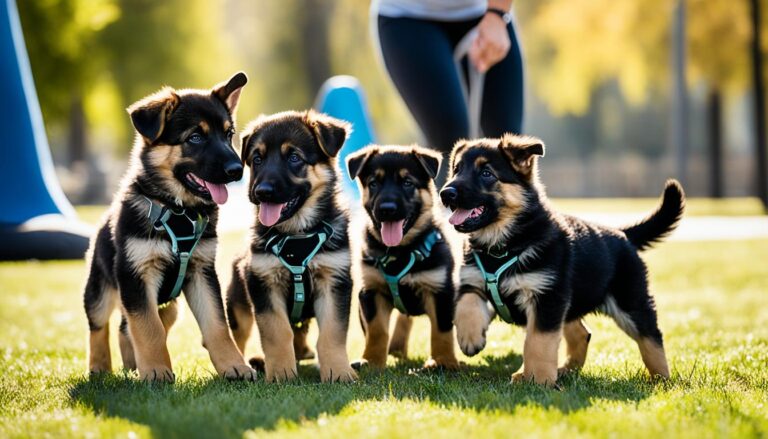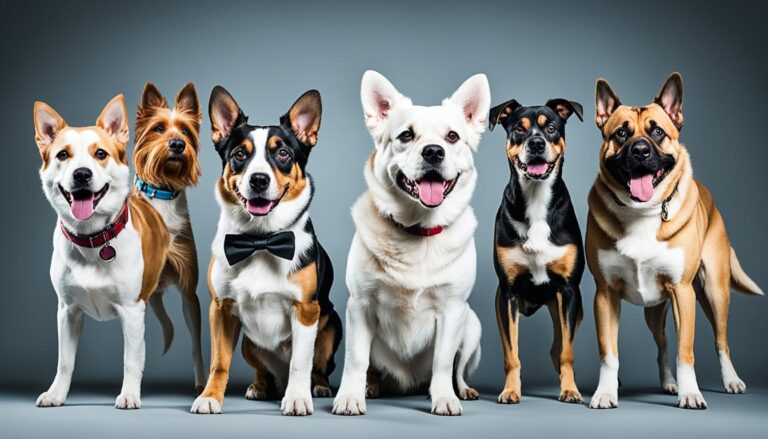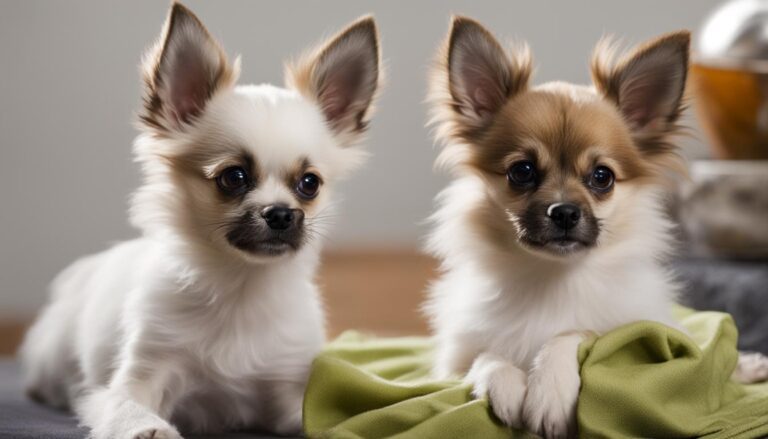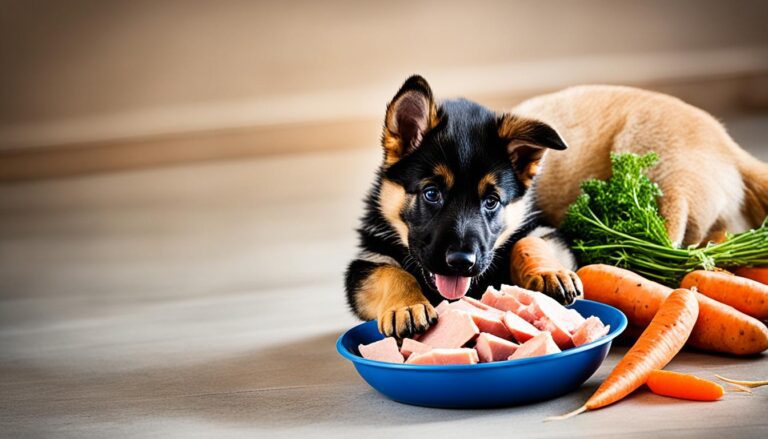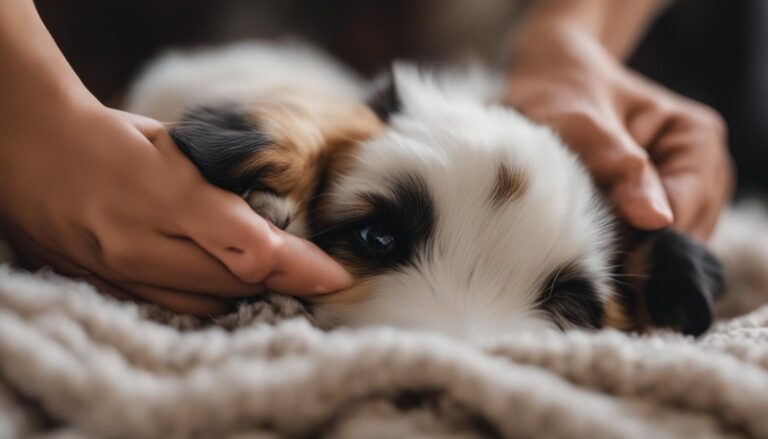Positive reinforcement training – Using positive reinforcement to train puppies.
Are you looking for a kind way to train your puppy? Positive reinforcement training is the key. It focuses on rewarding good actions instead of punishing bad ones. This creates a strong bond between you and your puppy while keeping their behavior healthy.
This way of training is a big deal. It works by giving treats, praise, or other rewards when your puppy does something right. With these rewards, puppies start to feel good about doing what you like, and they’re more likely to do it again.
But what really makes this training work? And how can you guarantee your puppy learns well? Let’s look at the most important steps of this amazing training method.
Key Takeaways
- Positive reinforcement training focuses on rewarding good behaviors, rather than punishing bad ones.
- Providing treats, praise, or other rewards immediately after the desired behavior strengthens the behavior and encourages the puppy to repeat it.
- Positive reinforcement builds a trusting relationship between the pet parent and the puppy, and it protects the puppy’s behavioral health.
- Proper timing, consistency, and using the right rewards are crucial for effective positive reinforcement training.
- Positive reinforcement training can be used to teach new commands and behaviors, as well as reinforce good manners.
What is Positive Reinforcement Training?
Positive reinforcement is rewarding good behavior with things puppies love, like treats or praise. This makes them more likely to do the good behavior again. It’s better than taking something away negative behavior is shown. This could cause problems like fear and aggression. Positive reinforcement is kinder and works better.
Positive Reinforcement vs. Negative Reinforcement
Positive reinforcement is all about rewarding the good stuff. It’s not just stopping bad behavior. This way, training becomes a happy game puppies enjoy. It’s about creating a strong friendship with your puppy as you teach them.
Positive Reinforcement Is Also a Movement
Many pet professionals and owners support positive reinforcement. This method focuses on encouraging good behaviors. It’s not about scolding for the bad ones. Training becomes a fun way to bond with your puppy. It builds trust and friendship between you both.
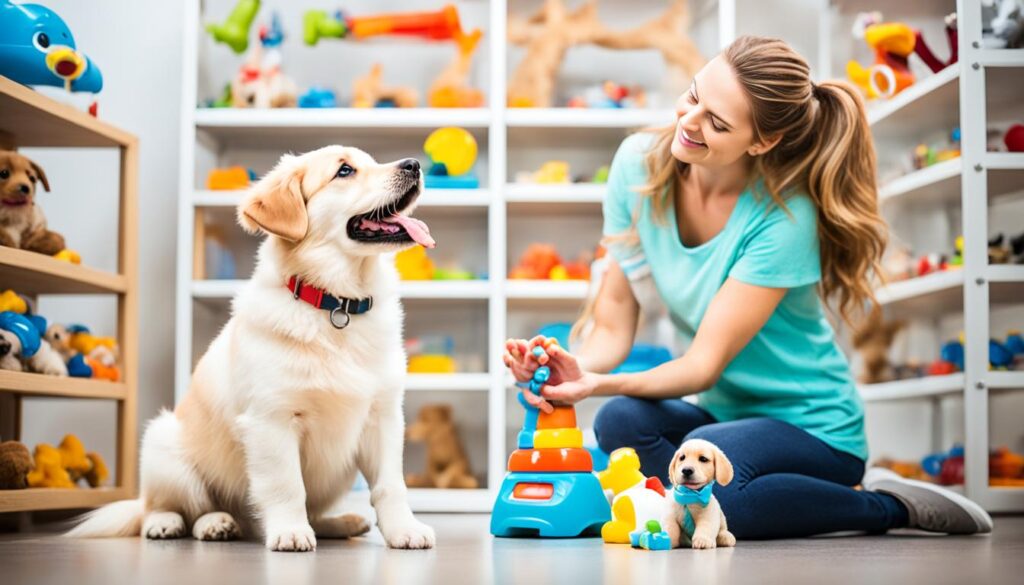
Positive Reinforcement Training – Using Positive Reinforcement to Train Puppies
Timing is Everything
Getting the timing right is key in positive reinforcement training. The puppy must get the reward right after they do what you ask. For instance, if you want them to sit, but they get a treat after standing, they might get confused.
Keep it Short
Puppies don’t focus for long, so keep training sessions under 10 minutes. Use simple, clear commands. Like “sit” or “come.” Start with small steps towards the full action you want.
Consistency is Key
Everyone in the house should train the same way. Use the same words and reward good actions together. Be careful to reward only what you mean to.
When to Use Positive Reinforcement
It’s best for teaching new things or good behavior. For example, sitting nicely before fun activities. But, watch out not to reward things you don’t want, like barking to go out. Use it wisely to get the behavior you want.
Types of Rewards
Rewards can be food, kind words, petting, or playtime. Most puppies love food treats. Make them small and special, and mix them up to keep the puppy interested.
When to Give Treats
First, treat every time the puppy gets it right to teach them a new trick. Eventually, give treats only sometimes, but always put in a good word. This keeps the puppy trying hard, even without a treat each time.
https://www.youtube.com/watch?v=kqV4PQNJ8lI
Tips for Effective Positive Reinforcement Training
To make the most of positive reinforcement training with your puppy, we recommend following these key tips:
First, keep track of how your puppy is doing over time. This is key to ensure they are improving in the right ways. It helps you see if there are areas needing more work or a different training approach.
Finding a quiet place for training is important. This way, your puppy can focus better without distractions. Use rewards that your specific puppy loves. This keeps them interested and willing to learn more.
A clicker or another marker is great for pinpointing the moment your puppy does something right. It improves the link between their action and the reward. Also, make training sessions short and enjoyable, about 10 minutes. This keeps your puppy excited and paying attention.


